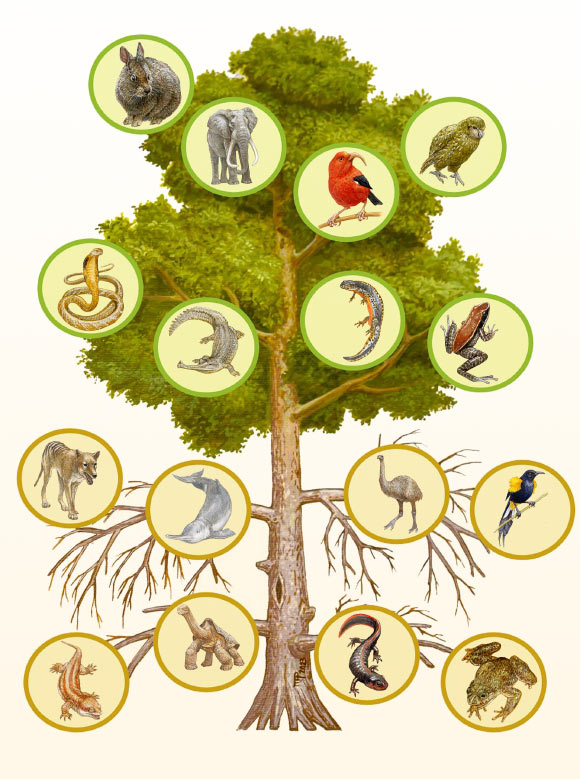Human-Driven Mass Extinction
Human-Driven Mass Extinction: Urgent Call for Global Action
Human-Driven Mass Extinction poses an unprecedented threat to global biodiversity.
Humanity's Wake-Up Call: Unraveling the Devastating Impact of Human-Driven Mass Extinction
In a world teetering on the brink of environmental catastrophe, a stark revelation emerges: the Sixth Mass Extinction, ominously driven by Homo sapiens, is annihilating entire animal genera at an unprecedented rate. This grim reality shatters the illusion of a planet untouched by the hand of its dominant species. Scientists from Stanford University and the Universidad Nacional Autonoma de Mexico have unearthed a shocking truth: since 1500 CE, 73 vertebrate genera have been condemned to extinction in a chilling ‘mutilation of the tree of life'.
This unprecedented environmental upheaval raises a poignant question: How did we arrive at this precipice of ecological ruin? Over the last century, the velocity of human activities has accelerated to a relentless pace, overshadowing the very ecosystems that cradled our existence for millennia. In a relentless quest for progress, human overpopulation has reached staggering proportions, creating a cataclysmic shift in the global environment. Natural habitats have been ruthlessly transformed or erased, and the once-teeming populations of wildlife have dwindled to a mere whisper of their former glory.
The specter of countless species disappearing from the face of the Earth haunts us, but the exact count of recent extinctions remains elusive. Current estimates suggest that animal species are disappearing at a rate hundreds or even thousands of times higher than the prehistoric norm that prevailed prior to the agricultural revolution.
In an era where information flows ceaselessly, it is the conservation statuses of species that offer us a lifeline. Utilizing data from organizations like the IUCN and Birdlife International, Dr. Gerardo Ceballos and Professor Paul Ehrlich have ventured into uncharted territory: assessing extinction not at the species level but at the broader genus level. This dive into the depths of biodiversity reveals a harrowing reality – 73 genera of land-dwelling vertebrates have vanished since 1500 CE.
Birds, nature's avian wonders, bear the brunt of this cataclysmic event, with 44 genera falling into the abyss of extinction. Following closely behind are mammals, amphibians, and reptiles. The alarm sounded by Dr. Ceballos is nothing short of a clarion call, one that cannot be muffled by the soft-spoken language of scientific caution.
As they gaze upon the tree of life, scientists envision it as a colossal, interconnected web. When a single twig, representing a species, is severed, adjacent twigs sprout forth, attempting to heal the breach. In this scenario, the tapestry of life on our planet retains a semblance of stability. Yet, when entire branches, or genera, are hacked away, it leaves behind a gaping void in the canopy – a chasm in the intricate fabric of biodiversity.
The repercussions of this cataclysmic loss ripple through every facet of our existence. The very stability of our civilization hinges precariously on the life support systems sustained by Earth's intricate web of life. Consider, for instance, the surge in Lyme disease. Once, white-footed mice, carriers of this debilitating illness, competed with passenger pigeons for sustenance, like acorns. With passenger pigeons extinguished and natural predators like wolves and cougars dwindling, the mouse population has exploded, subsequently leading to an uptick in human Lyme disease cases.
This is just one microcosmic illustration of the implications. The extinction of an entire genus could usher in a cascade of disasters that reverberate across our fragile planet. Moreover, it entails a loss of knowledge, as exemplified by the gastric brooding frog. These remarkable creatures possessed the unique ability to swallow their fertilized eggs and nurture tadpoles in their stomachs, all while ‘turning off' stomach acid. The potential for their study in understanding human diseases like acid reflux, linked to esophageal cancer, now remains unrealized.
Beyond the immediate consequences, the crisis of mass extinction casts a long, ominous shadow over our worsening climate predicament. Climate disruption, spurred by human activities, and the relentless march of extinction are locked in a deadly dance. The intricate balance of plants, animals, and microbes on Earth plays a pivotal role in determining the climate we inherit. As Professor Ehrlich aptly puts it, the nature of our planet's biodiversity is a chief arbiter of the climate we are destined to endure.
To avert further calamity, Dr. Ceballos and Professor Ehrlich issue a resounding call to action. The scale of their plea is unprecedented – political, economic, and social efforts must surge forward in unison. The tropics, rich in both genus extinctions and endangered genera, stand as ground zero for conservation efforts. These lush regions, teeming with unique biodiversity, hold the key to curbing the global extinction crisis.
Yet, the gravity of the situation cannot be overemphasized. Humanity's exponential population growth and insatiable consumption threaten to irrevocably mar the tapestry of life. The notion that we can persist in these unsustainable practices while endeavoring to save biodiversity is not just unrealistic; it's a self-destructive act akin to sawing off the very limb we sit on.
Today, we stand at a crossroads. Our choices will echo through the annals of history, shaping the world we leave for future generations. The time for introspection and action is now, for we are not just stewards of this planet; we are intricately woven threads in the tapestry of life itself.
Join the conversation on this critical issue. Share your thoughts and insights below, and let us embark on a collective journey toward a more sustainable, harmonious coexistence with the natural world that sustains us all.
For more in-depth coverage of this critical topic, stay tuned to NewsBurrow Network as we unravel the complexities of our planet's sixth mass extinction crisis.
Human-Driven Mass Extinction: Urgent Call for Global Action
As we delve into the critical issue of the human-driven mass extinction, it becomes increasingly evident that urgent action is needed to address the alarming loss of biodiversity on our planet. The extinction of entire animal genera, as highlighted in this eye-opening study, not only represents a tragic loss of life but also poses profound consequences for the delicate balance of our ecosystems. The scale and gravity of this issue require us all to pause and reflect on the role we play in this unfolding crisis.
In light of the profound implications discussed in this article, we invite you to explore a range of carefully selected biodiversity products. These products are designed to promote awareness, conservation, and sustainable living practices. By supporting these initiatives, you contribute to the preservation of our planet's rich biodiversity. Together, we can make a difference and ensure a future where all species thrive. Please journey with us to the affiliate product section, where you'll find meaningful ways to engage with this crucial cause and take positive action in the face of the sixth mass extinction event.
Shop Products On Amazon
Products From Amazon
Shop Products on Ebay
Trending Similar Stories in the News
Human-driven mass extinction is eliminating entire genera | Stanford ... - Stanford University News
September 18, 2023 - Stanford University NewsHuman-driven mass extinction is eliminating entire genera | Stanford Stanford University News...
Study: Human-Driven Sixth Mass Extinction is Eliminating Entire ... - Sci.News
September 18, 2023 - Sci.NewsStudy: Human-Driven Sixth Mass Extinction is Eliminating Entire Sci.News...
Mutilation of the tree of life via mass extinction of animal genera ... - pnas.org
September 18, 2023 - pnas.orgMutilation of the tree of life via mass extinction of animal genera pnas.org...
Trending Videos of Human-Driven Mass Extinction
Why we need to fear the loss of biodiversity as much as climate change | DW News
UN Secretary-General Antonio Guterres urged governments to end an "orgy of destruction," as a biodiversity summit kicks off in ...
US biodiversity crisis: 41% ecosystems face the risk of collapse
A new report led by NatureServe has revealed that more than one-third of plants and animals are at risk of vanishing in the United ...
Similar Posts, Popular Now
Ancient Egyptian Pyramid Construction
Fossilized Bee Discovery
















GIPHY App Key not set. Please check settings